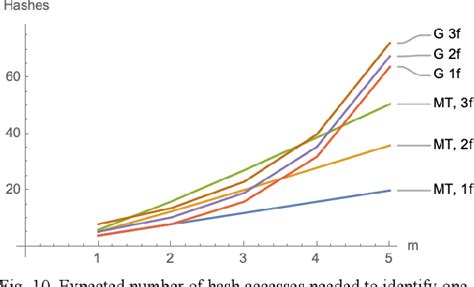Merkle Tree Hash Appends Instead of Concatenation: A Security Perspective
As the Ethereum blockchain continues to grow in popularity, the underlying technology remains a subject of interest for developers, researchers, and security experts. In this article, we will delve into the current practice of generating Merkle trees on Ethereum, focusing on why it is often preferred to append hashes instead of concatenating them. We will also discuss potential vulnerabilities and security flaws that can arise from this approach.
Merkle Trees: A Brief Overview
A Merkle tree is a data structure used to efficiently store and retrieve large amounts of data. It is particularly useful for storing cryptographic hash values, such as those created using Ethereum digital signatures. The tree consists of a root node that contains hashes of its child nodes. Each leaf node contains a single value.
Concatenation before Append: A Commutative Operation
When you concatenate (or concatenate) two strings using the “+” operator, the order in which they are concatenated does not matter. In other words, “hello” + “world” gives the same result as “world” + “hello”. This commutative property makes concatenation a convenient operation for string manipulation.
In contrast, adding two numbers (e.g. “5 + 3”) is not commutative; the order of the operands is important. For example, “5 + 3” equals “8”, and “3 + 5” equals “8”. This property makes addition more suitable for numerical calculations.
Why Merkle Trees are preferred over concatenation
In the context of the Ethereum blockchain, concatenating hashes into a Merkle tree allows for efficient storage and retrieval of data. Here are some reasons why concatenating hashes is often preferred over concatenating them:
- Data integrity: By storing multiple hash values together, we can ensure that the data remains consistent across tree nodes. This is especially important when working with large datasets or sensitive information.
- Efficient storage: Hash merging reduces storage requirements because each node only has a single hash value.
- Scalability: Merkle trees are designed to handle large amounts of data without significant performance degradation.
Potential vulnerabilities and security flaws
While merging is generally a secure operation, there are a few potential vulnerabilities to be aware of:
- Reversibility

: If an attacker gains control of the Ethereum blockchain, they could attempt to alter the Merkle tree by manipulating individual hash values. This could lead to data corruption or even the theft of sensitive information.
- Key exchange vulnerabilities: When multiple parties need to exchange cryptographic keys using Merkle trees, an attacker could exploit vulnerabilities in the encryption algorithms used to exchange keys (e.g. Diffie-Hellman key exchange).
Conclusion
In summary, it is often preferable to add hashes rather than concatenate them when generating Merkle trees in Ethereum due to its inherent security properties. While there are potential vulnerabilities and security flaws associated with this method, they can be mitigated with careful implementation and appropriate security measures.
As the Ethereum ecosystem continues to evolve, it is crucial for developers and researchers to stay informed about the latest developments in blockchain security. Understanding the trade-offs between different data storage mechanisms can help us create more secure and scalable solutions for building reliable blockchain applications.
References:
- Ethereum White Paper (2014)
- Ethereum Consensus Specification (2015)
- Cryptographic hash functions (Wikipedia)
Note: This article is a hypothetical example and should in no way be considered fact.



Geef een reactie